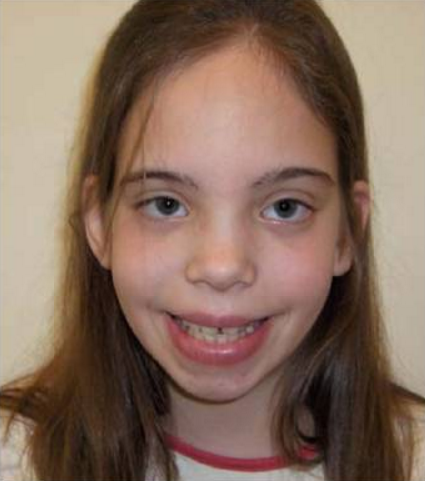Trisomy X

Trisomy X is a sex chromosome anomaly with a variable phenotype caused by the presence of an extra X chromosome in females (47,XXX instead of 46,XX).
Epidemiology
It is the most common female chromosomal abnormality occurring in approximately 1 in 1,000 female births. However, as most individuals are only mildly affected or asymptomatic, it is estimated that only 10% of individuals with trisomy X are actually diagnosed.
Clinical description
The most common physical features include tall stature, epicanthal folds, hypotonia and clinodactyly. Seizures, renal and genitourinary abnormalities, and premature ovarian failure (POF; see this term) are also associated findings. Children with trisomy X have higher rates of motor and speech delays than in the general poplation, with an increased risk of cognitive deficits and learning disabilities presenting in the school-age years. Psychological problems such as attention deficits, mood disorders (including anxiety and depression), and adjustment disorders are also more common than in the general population.
Etiology
Trisomy X most commonly occurs as a result of nondisjunction during meiosis, although postzygotic nondisjunction occurs in approximately 20% of cases. Advanced maternal age (known to be associated with an increased likelihood of nondisjunction events) is noted in approximately 30% of trisomy X cases. Mosaicism (46,XX/47,XXX, 47,XXX/48,XXXX or in combinations including 45,X Turner's syndrome (see this term) cell lines) occurs in approximately 10% of cases. The phenotype in trisomy X is thought to be associated with overexpression of genes on the X-chromosome that escape X-inactivation but specific genotype-phenotype relationships remain to be defined.
Diagnostic methods
Diagnosis during the prenatal period by amniocentesis is common. Indications for postnatal diagnosis most commonly include developmental delay or hypotonia, learning disabilities, emotional or behavioral difficulties, or POF.
Differential diagnosis
Differential diagnosis prior to definitive karyotype results includes fragile X syndrome, tetrasomy X, pentasomy X, and Turner syndrome mosaicism (see these terms).
Antenatal diagnosis
Patients diagnosed in the prenatal period should be followed closely for developmental delay so that early intervention therapies can be implemented as needed.
Genetic counseling
Genetic counseling is recommended, with families being informed about the sporadic nature of the chromosome anomaly, the wide variability in phenotype, and low risk of recurrence (< 1%-5%).
Management and treatment
Following diagnosis, clinical evaluation should be conducted to identify any manifesting features of the disorder. School-age children and adolescents often benefit from a psychological evaluation with an emphasis on identifying and developing an intervention plan for problems in cognitive/academic skills, language, and/or social-emotional development. Fertility in women with trisomy X is generally considered normal, however, adolescents and adult women presenting with late menarche, menstrual irregularities, or fertility problems should be evaluated for hormonal abnormalities that may signal ovarian insufficiency. Patients should be referred to support organizations to receive individual and family support.
Prognosis
The prognosis is variable, depending on the severity of the manifestations and on the quality and timing of treatment.